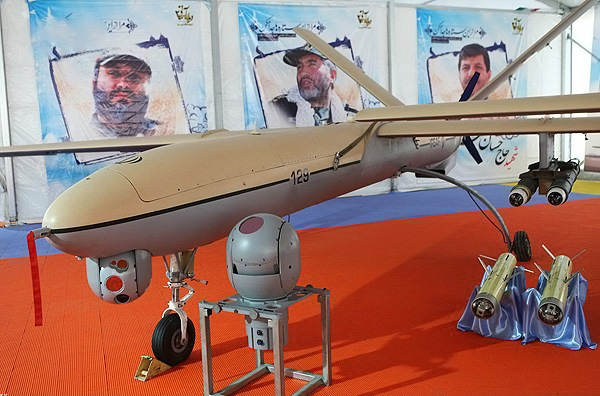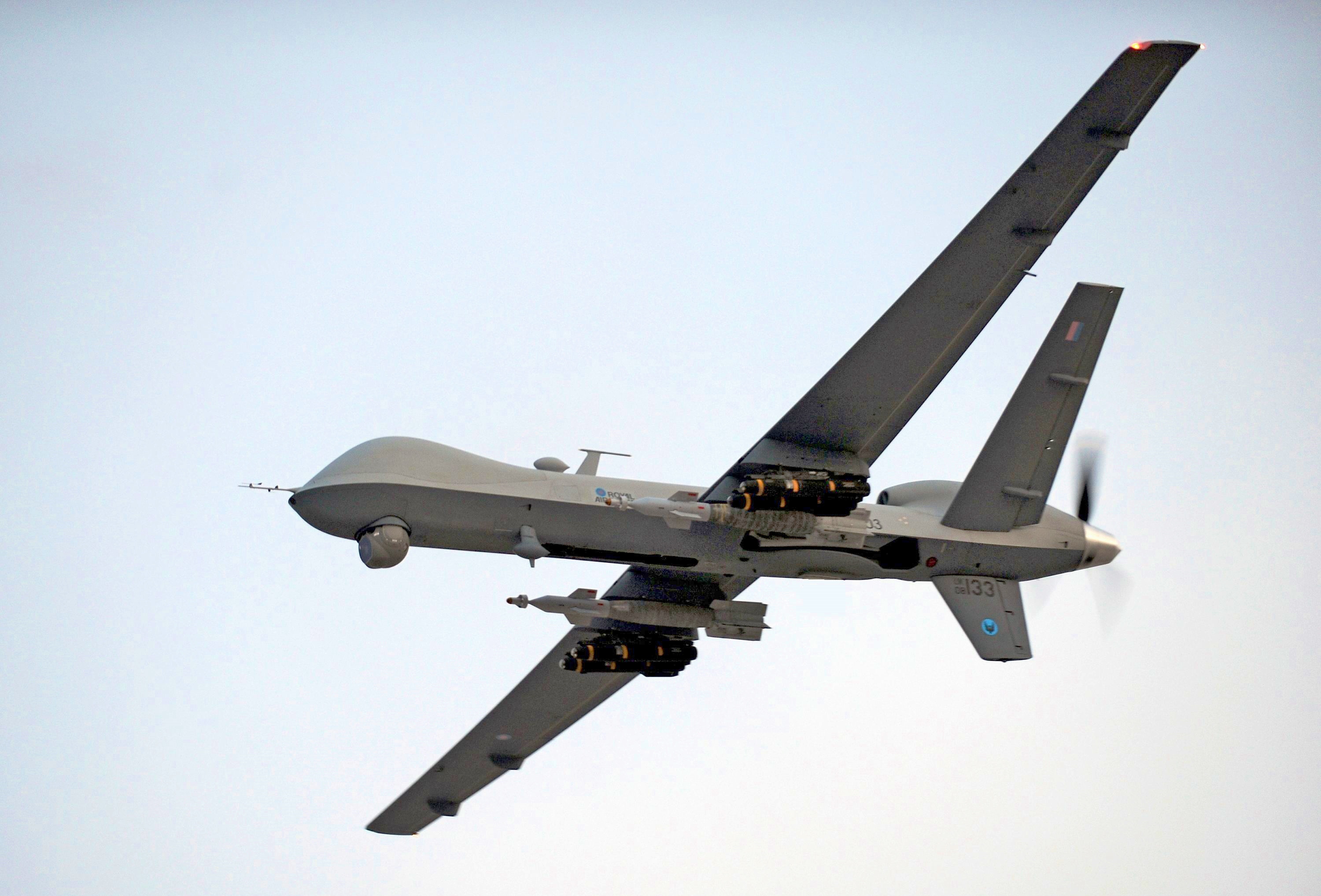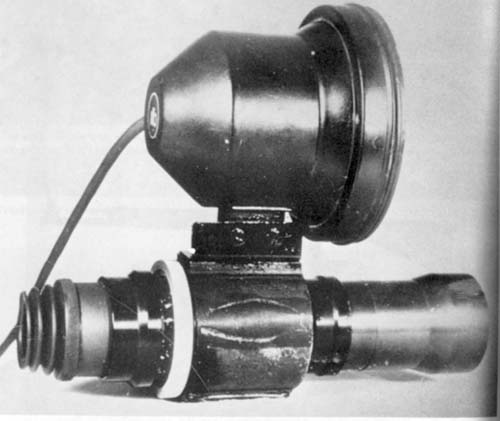|
Sadid-345
The Sadid-345, also known simply as the Sadid guided bomb is an Iranian precision-guided glide bomb with a fragmentation warhead. The Sadid-345 is meant for use on UCAVs. Its main launch platform is the Shahed 129. Specifications The bomb weighs 34 kg and is 1.63 meters long, with a diameter of 152 mm. It has four fixed fins on the body for lift and stability and four deflectable fins on the tail for trajectory control. The bomb has a range of 6 km and is made of composite material. The Sadid-345 warhead is filled with composition H6 explosive and is prefragmented, with a specified lethal radius of 30 m. It is detonated by an impact fuse. There is the possibility that Sadid-345 glide bombs could be developed with tandem-warheads, but as of the present there is no evidence of this. The Sadid-345 can be equipped with an infrared seeker, with CEP of 2.5 meters, a laser seeker with a CEP of 2.5 m, or a visual light seeker with a CEP of 5 m (though the CEP ma ... [...More Info...] [...Related Items...] OR: [Wikipedia] [Google] [Baidu] |
Shahed 129
The Shahed 129 ( fa, شاهد ۱۲۹, English: "witness"; sometimes S129) is an Iranian single-engine medium-altitude long-endurance unmanned combat aerial vehicle (UCAV) designed by Shahed Aviation Industries for the Islamic Revolutionary Guard Corps (IRGC). The Shahed 129 is capable of combat and reconnaissance missions and has an endurance of 24 hours; it is similar in size, shape and role to the American MQ-1 Predator and is widely considered as one of the most capable drones in Iranian service. The UAV has been used for airstrikes in the Syrian Civil War and for border patrol on Iran's eastern border. As of 2017 the Shahed 129 and Saegheh are expected to form the backbone of Iran's high-end UAV fleet for at least the next decade. Development Development began in 2005 when Iran Aircraft Manufacturing Industrial Company (HESA) began design work on the HESA-100 UAV. This was essentially the same design as the Shahed 129 but was shorter and with a squarish fuselage. Desi ... [...More Info...] [...Related Items...] OR: [Wikipedia] [Google] [Baidu] |
Sadid-1
The Sadid-1 (also known as the Sadid-361, the Fat'h 362, and the Sadid-342) is an Iranian TV-guided anti-tank missile derived from Iran's Toophan missiles. It is described by multiple sources as similar in design to the Israeli Spike-ER missile, and was intended as the armament for Iran's Shahed 129 UAV. Specifications A mockup of the Sadid-1 was first seen at Iran's 2010 Kish Air Show. As of 2016, the Sadid-1's guidance system, laser/TV seeker and propulsion unit were still under development. Detailed information about the Sadid-1 has not been disclosed; however, it is believed to be about 140 cm long, to have a range of 4000 meters, and to have a maximum flight time of about thirty seconds. Operational history The Sadid-1 was a proposed armament for the Shahed 216, an exceptionally obscure attack helicopter proposal from HESA/Shahed Aviation around 2015. The Sadid-1 was not operationally deployed on the Shahed 129; one source says this was due to problems with the l ... [...More Info...] [...Related Items...] OR: [Wikipedia] [Google] [Baidu] |
Iran
Iran, officially the Islamic Republic of Iran, and also called Persia, is a country located in Western Asia. It is bordered by Iraq and Turkey to the west, by Azerbaijan and Armenia to the northwest, by the Caspian Sea and Turkmenistan to the north, by Afghanistan and Pakistan to the east, and by the Gulf of Oman and the Persian Gulf to the south. It covers an area of , making it the 17th-largest country. Iran has a population of 86 million, making it the 17th-most populous country in the world, and the second-largest in the Middle East. Its largest cities, in descending order, are the capital Tehran, Mashhad, Isfahan, Karaj, Shiraz, and Tabriz. The country is home to one of the world's oldest civilizations, beginning with the formation of the Elamite kingdoms in the fourth millennium BC. It was first unified by the Medes, an ancient Iranian people, in the seventh century BC, and reached its territorial height in the sixth century BC, when Cyrus the Gr ... [...More Info...] [...Related Items...] OR: [Wikipedia] [Google] [Baidu] |
Glide Bomb
A glide bomb or stand-off bomb is a standoff weapon with flight control surfaces to give it a flatter, gliding flight path than that of a conventional bomb without such surfaces. This allows it to be released at a distance from the target rather than right over it, allowing a successful attack without the aircraft needing to survive until reaching the target. World War II-era glide bombs like the German Fritz X and Henschel Hs 293 pioneered the use of remote control systems, allowing the controlling aircraft to direct the bomb to a pinpoint target as a pioneering form of precision-guided munition. Modern systems are generally self-guided or semi-automated, using GPS or laser designators to hit their target. The term "glide bombing" does not refer to the use of glide bombs, but a style of shallow-angle dive bombing. Early efforts German designs World War I In October 1914 Wilhelm von Siemens suggested what became known as the Siemens torpedo glider, a wire-guided flyi ... [...More Info...] [...Related Items...] OR: [Wikipedia] [Google] [Baidu] |
UCAV
An unmanned combat aerial vehicle (UCAV), also known as a combat drone, colloquially shortened as drone or battlefield UAV, is an unmanned aerial vehicle (UAV) that is used for intelligence, surveillance, target acquisition, and reconnaissance and carries aircraft ordnance such as missiles, ATGMs, and/or bombs in hardpoints for drone strikes. These drones are usually under real-time human control, with varying levels of autonomy. Unlike unmanned surveillance and reconnaissance aerial vehicles, UCAVs are used for both drone strikes and battlefield intelligence. Aircraft of this type have no onboard human pilot. As the operator runs the vehicle from a remote terminal, equipment necessary for a human pilot is not needed, resulting in a lower weight and a smaller size than a manned aircraft. Many countries have operational domestic UCAVs, and many more have imported armed drones or are in the process of developing them. History One of the earliest explorations of the concept ... [...More Info...] [...Related Items...] OR: [Wikipedia] [Google] [Baidu] |
Shahed 121, Shahed 129, And Sadid Guided Bomb
Shahed (Persian شاهد ) may refer to: * Shahed (name), or Shahd, a given name and surname * Shahed, Iran, or Shahid, a village in Fars province * Shahed Aviation Industries, an Iranian aerospace company known for designing military UAVs * Shahed - Bagher Shahr Metro Station, Tehran County, Iran * Shahed Metro Station (Shiraz), Iran * Shahed University Shahed University (Persian: دانشگاه شاهد) is a public university in Tehran, Iran. The campus is located in the southern part of Tehran along the Persian Gulf Freeway. Founded in 1990, the university started its activities by accepting ..., Tehran, Iran See also * Shahid (other) {{disambiguation ... [...More Info...] [...Related Items...] OR: [Wikipedia] [Google] [Baidu] |
Composition H6
__NOTOC__ Composition H6 is a castable military explosive mixture composed of the following percentages by weight: * 44.0% RDX * 29.5% TNT * 21.0% powdered aluminium * 5.0% paraffin wax as a phlegmatizing agent. * 0.5% calcium chloride H6 is used in a number of military applications, notably underwater munitions (e.g. naval mines, depth charges and torpedoes) where it has generally replaced torpex, being less shock-sensitive and having more stable storage characteristics. It is approximately 1.35 times more powerful than pure TNT. Properties * Density: 1.72 g/cm3 * Velocity of detonation: 7,367 m/s See also *Torpex * Tritonal * Minol *Amatol Amatol is a highly explosive material made from a mixture of TNT and ammonium nitrate. The British name originates from the words ammonium and toluene (the precursor of TNT). Similar mixtures (one part dinitronaphthalene and seven parts amm ... * Composition C References Explosives {{explosive-stub ... [...More Info...] [...Related Items...] OR: [Wikipedia] [Google] [Baidu] |
Infrared Seeker
Infrared homing is a passive weapon guidance system which uses the infrared (IR) light emission from a target to track and follow it seamlessly. Missiles which use infrared seeking are often referred to as "heat-seekers" since infrared is radiated strongly by hot bodies. Many objects such as people, vehicle engines and aircraft generate and emit heat and so are especially visible in the infrared wavelengths of light compared to objects in the background. Infrared seekers are passive devices, which, unlike radar, provide no indication that they are tracking a target. That makes them suitable for sneak attacks during visual encounters or over longer ranges when they are used with a forward looking infrared or similar cuing system. Heat-seekers are extremely effective: 90% of all United States air combat losses over the past 25 years have been caused by infrared-homing missiles. They are, however, subject to a number of simple countermeasures, most notably by dropping flares beh ... [...More Info...] [...Related Items...] OR: [Wikipedia] [Google] [Baidu] |
Shahed 129 Wing And Armament
Shahed (Persian شاهد ) may refer to: * Shahed (name), or Shahd, a given name and surname * Shahed, Iran, or Shahid, a village in Fars province * Shahed Aviation Industries, an Iranian aerospace company known for designing military UAVs * Shahed - Bagher Shahr Metro Station, Tehran County, Iran * Shahed Metro Station (Shiraz), Iran * Shahed University Shahed University (Persian: دانشگاه شاهد) is a public university in Tehran, Iran. The campus is located in the southern part of Tehran along the Persian Gulf Freeway. Founded in 1990, the university started its activities by accepting ..., Tehran, Iran See also * Shahid (other) {{disambiguation ... [...More Info...] [...Related Items...] OR: [Wikipedia] [Google] [Baidu] |
IRGC
The Islamic Revolutionary Guard Corps (IRGC; fa, سپاه پاسداران انقلاب اسلامی, Sepāh-e Pāsdārān-e Enghelāb-e Eslāmi, lit=Army of Guardians of the Islamic Revolution also Sepāh or Pasdaran for short) is a branch of the Iranian Armed Forces, founded after the Iranian Revolution on 22 April 1979 by order of Ayatollah Ruhollah Khomeini. IISS Military Balance 2006, Routledge for the IISS, London, 2006, p. 187 Whereas the Iranian Army defends Iranian borders and maintains internal order, according to the Iranian constitution, the Revolutionary Guard is intended to protect the country's Islamic republic political system, which supporters believe includes preventing foreign interference and coups by the military or "deviant movements". The IRGC is designated as a terrorist organization by the governments of Bahrain, Saudi Arabia and the United States. As of 2011, the Revolutionary Guards had at least 250,000 military personnel including ground, ae ... [...More Info...] [...Related Items...] OR: [Wikipedia] [Google] [Baidu] |
Islamic State Of Iraq And The Levant
An Islamic state is a state that has a form of government based on Islamic law (sharia). As a term, it has been used to describe various historical polities and theories of governance in the Islamic world. As a translation of the Arabic term ''dawlah islāmiyyah'' ( ar, دولة إسلامية) it refers to a modern notion associated with political Islam (Islamism). Notable examples of historical Islamic states include the State of Medina, established by the Islamic prophet Muhammad, and the Arab Caliphate which continued under his successors and the Umayyads. The concept of the modern Islamic state has been articulated and promoted by ideologues such as Sayyid Rashid Rida, Mohammed Omar, Abul A'la Maududi, Ayatollah Ruhollah Khomeini, Israr Ahmed, Sayyid Qutb and Hassan al-Banna. Implementation of Islamic law plays an important role in modern theories of the Islamic state, as it did in classical Islamic political theories. However, most of the modern theories also m ... [...More Info...] [...Related Items...] OR: [Wikipedia] [Google] [Baidu] |
HESA Shahed 285
HESA Shahed 285 ( fa, شاهد ۲۸۵) is a light attack/reconnaissance helicopter developed in Iran. It was unveiled on . It is being produced in two versions: a light attack/recon version and a maritime patrol/anti-ship version. Design and development The Shahed 285 is based on the composite '' Shahed-278'', which is a relatively light helicopter with empty weight, derived from the Bell 206 Jetranger. Compared to the American OH-58 Kiowa that retains the airframe of the Bell 206, the Shahed 285 is a single-seater with a narrower fuselage, but retains the tail and powerplant / rotor structures, and is intended for military use. Although designed by the IRGC, this helicopter is scheduled to be produced by HESA. Shahed 285 comes in two variants. AH-85A which is a land based variant and AH-85C which is a naval one. AH-85A is armed with 14 rockets and a PKMT light machine gun either on a rotatable turret or on a static mount, or an NSV heavy machine gun in an underfuselage ... [...More Info...] [...Related Items...] OR: [Wikipedia] [Google] [Baidu] |





.jpg)